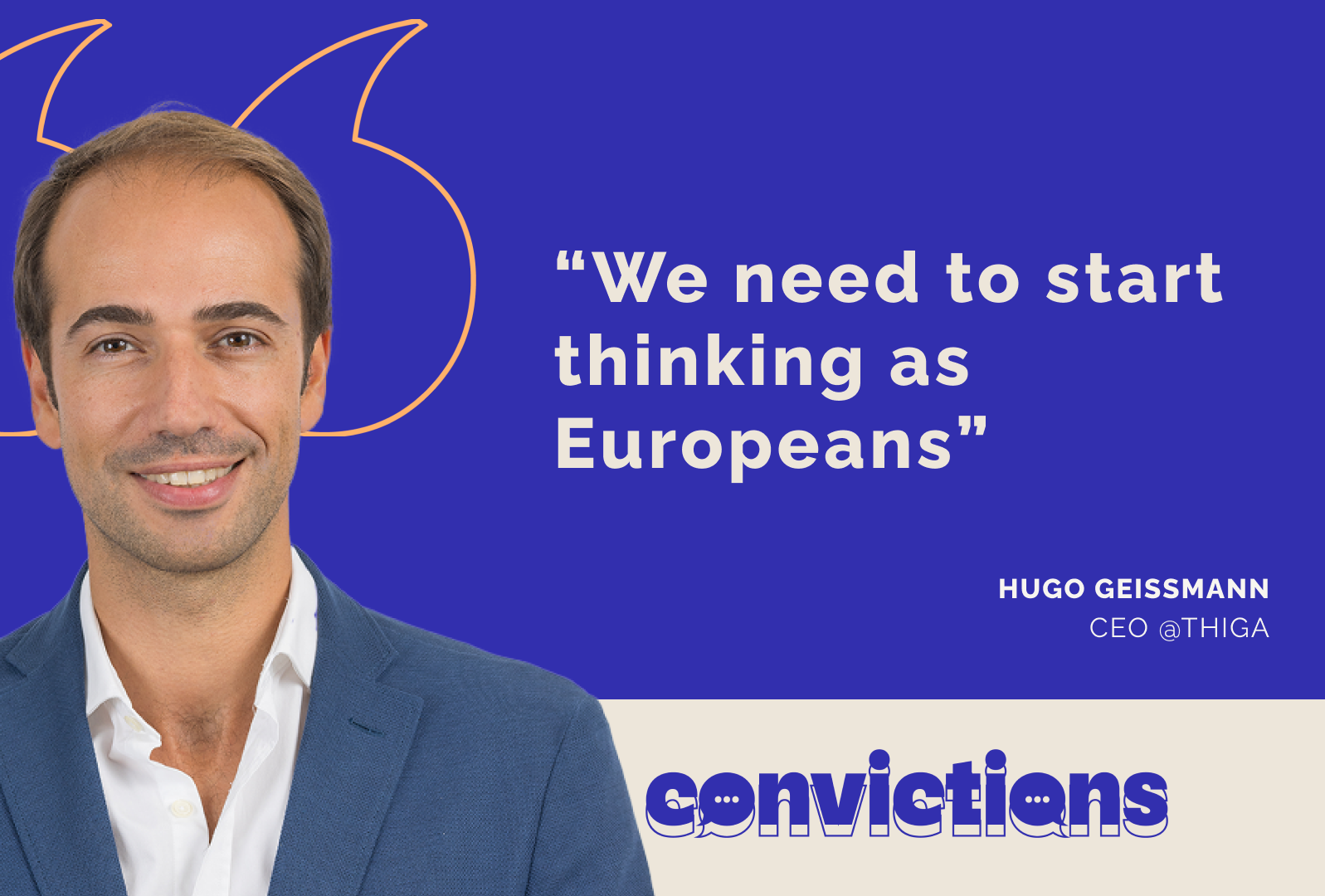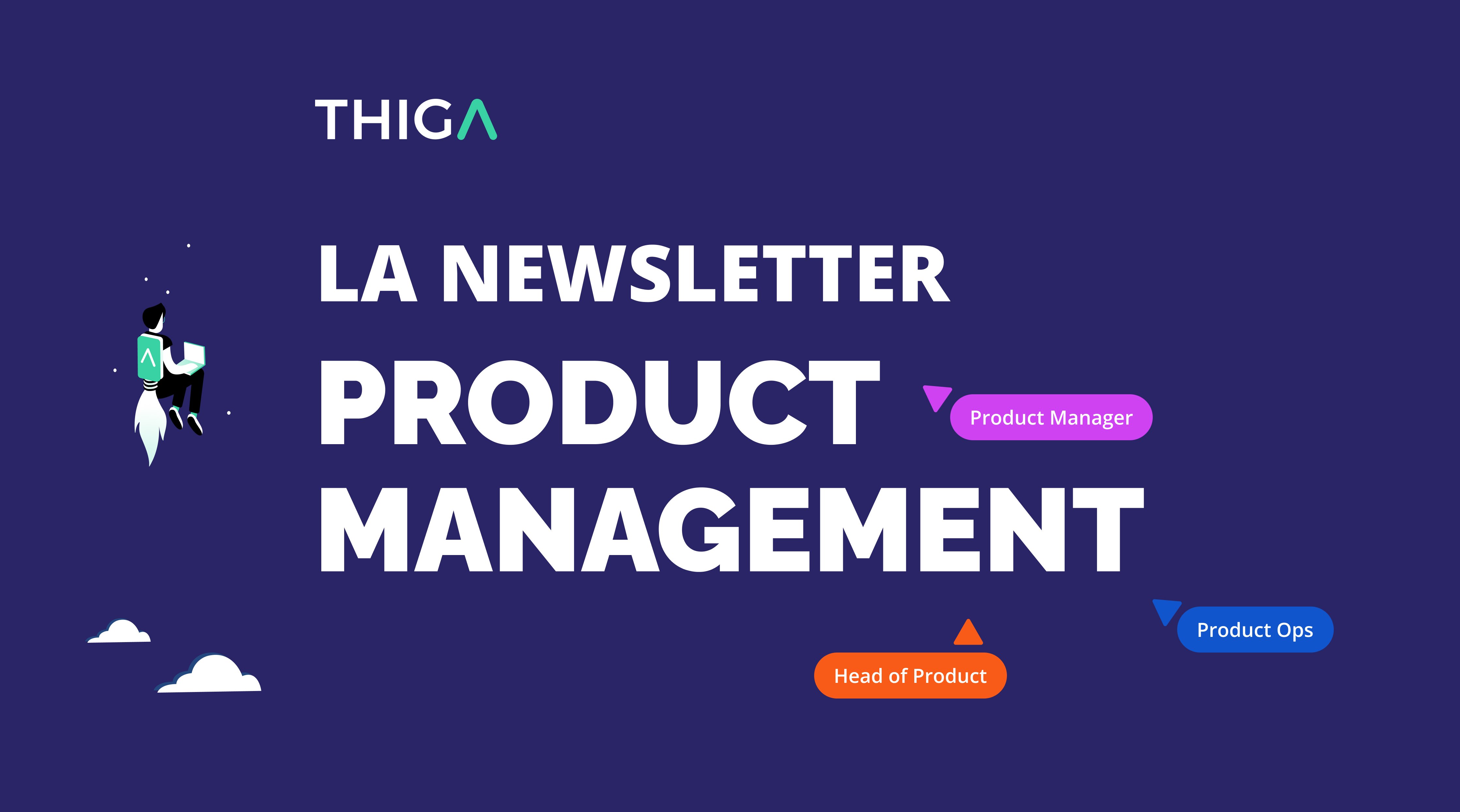Artificial intelligence is making headlines. Everyone’s talking about it! But few are asking what it truly changes. In the midst of the tech frenzy, we often confuse innovation with impact. In this opinion piece, Abdessamad Benhalima, Head of Data & AI at Thiga, calls for a pause — and reminds us of what really matters: integration, usage, and experience. Because for AI to live up to its promises, we need to think Product.
I have to admit, the recent buzz is rubbing me the wrong way a bit. As soon as someone mentions AI, everyone gets hyped: “Look at what this model can do! It outperformed that other model on tests X, Y, and Z. And then the Chinese did this while the Americans did that…” All the content is focused on the best architecture for doing RAG or the right framework to build your agent. It’s the same thing with every tech innovation, really. A new toy comes out, and we want to use it everywhere without taking the time to think if it’s actually going to work. For me, this tech-centered approach is understandable, but insufficient.
Step away from tech-worship!
Sure, we need to think about the tech. If you don’t master it, you can’t use AI properly. But that’s not enough! Companies end up spending fortunes building platforms, choosing the right models, fine-tuning them… But by forgetting to think through the end-to-end process, they’re taking massive risks with the initiative as a whole! And yes, I know some people will see me as a buzzkill. I get that it’s not what you want to hear when talking about AI. But please, stop focusing only on models and agents! Think ahead to the experience they’re going to be part of. Ask yourself what it’s going to change for users, how you’re going to put it in their hands—and take that into account. That’s what will determine the success of your AI project, no matter what technology you use.
Want to stop investing blindly in AI? Download our AI Product Canvas — a practical tool packed with the right questions to ask before launching your next artificial intelligence initiative
For too many AI products, most of the resources were poured into perfecting the technical side without considering the impact on users or how to build their trust. The coffers are empty, and we realize it doesn’t work right away. What if this technology actually isn’t ROI-positive? Well, yeah—when you’ve only thought things through halfway, it’s hard to succeed.
It’s something we forget way too often when talking about AI: thinking about humans. Even when there are agents everywhere—and that day will come—we’ll need to figure out how to reposition humans within it all. If we automate processes, there will likely still be people in the loop to validate what the AI produces. How will they interact with it? We sideline all these questions because we’re focused only on the solution. By not thinking about it from the start, we might end up with a solution that technically works, but gets rejected—or has unintended consequences. Because if it doesn’t work on a human level, even the most technically advanced agent will be unusable and unused. And therefore, by definition, completely useless.
Excess is always a vice!
For me, the secret to successful AI is having a systemic mindset. Finding the right balance between tech experimentation to broaden what’s possible and genuinely considering the user and customer journey by repositioning AI within a broader ecosystem. I get it—it’s a real challenge! And I understand if you’re surprised to hear me, head of AI at Thiga, making this point. I’ll admit, it’s a bit counterintuitive for me to say this. Theoretically, my goal is for everyone to put AI everywhere! But the truth is: it’s not always the right solution. What really unlocks AI’s value is thinking things through end-to-end: how it’s going to transform interactions, the environment we work in… It’s not just about digital interfaces. It’s more than CX. It’s Service Design.
The Product approach is what separates a company that uses AI successfully from one that’s just showing off like, “Look at us, we’re doing AI too!”
That’s where I circle back to my slightly boring message—I’ll admit—of “we need to return to Product fundamentals.” You have to think of all this as a product, one that solves a real need and fits into a journey. Then you tightly frame your experiments to make sure you’re headed in the right direction. Because it’s this ability to embed technology in the right part of the journey that determines whether it’ll work—or not. Take ChatGPT for example. Sure, it’s a conversational assistant, and there are thousands of other ways to use AI. But the way OpenAI put the tool in users’ hands first, and then enriched it with more features, is inspiring. Even today—and even though other companies are doing great—the UX of ChatGPT remains a reference point for conversational experiences with LLMs. This approach and this culture are reflected right at the top with Sam Altman, who comes from a Product background.
Think Product!
Here’s a message for decision-makers: Wanting to do AI isn’t a bad thing in itself. But don’t release features just because you feel like it! Unless your goal is simply to win awards like “Most Ambitious AI Use Case of 2025.” If that’s your thing—go for it! But if you want to make an impact, adopt a Product approach. That’s what separates a company using AI successfully from one that just wants to show off like, “Look at us, we’re doing AI too!”
Now, I want to speak directly to technical teams. I know how demanding stakeholders can be. Sometimes you don’t have a choice—you just have to do what you’re told. But you should be able to measure things, to have data showing whether it’s working or not, and explaining why. That way, you’ll gain control over your experiments. Trust me, it’s better than launching stuff without thinking about the expected impact, measuring results in a slapdash way, and calling it a win just because your boss is happy something got shipped.
Yes, AI is going to change the world as we know it.
That being said, I get that there are different approaches. You could say, “I don’t care—I’ll just launch it. Even if it doesn’t work, I’ll have learned something.” But you risk breaking user trust, and having to work twice as hard to get them on board once your solution is ready. Whereas if you take them by the hand from the start—thinking through the full impact, starting small, with a well-defined scope—sure, it’ll take more time… But you’ll gain so much more in the long run!
Today, people are imagining a future where everything is automated. So yes, AI is going to change the world as we know it. It will shake up the economy and transform our daily lives. I’m not saying otherwise—and we do need to prepare for it. Yes, it’s an amazing toy. So I’m not saying we shouldn’t look at it with a child’s eyes!
If we don’t take that toy and push it around to test its limits from a purely technical standpoint, then sure—it’s hard to imagine what it might bring us. That’s what we do at Thiga. Be curious, try things (even the ones that seem dumb or pointless) to then understand what they can offer in a more serious context. And that’s what I try to embody myself. But I’ll say it one last time: that’s not enough! To build great AI, you absolutely need a strong Product and Design mindset. That’s how you’ll optimize the success of your projects. In short, it takes childlike wonder… and grown-up pragmatism.
Want to dig deeper? Check out our article on how to successfully incorporate AI into your product!

-1.png)

.png)
